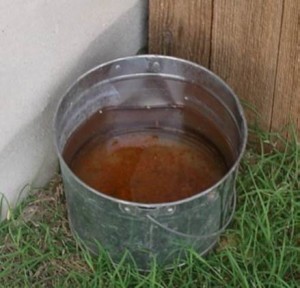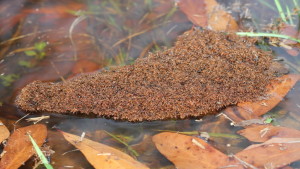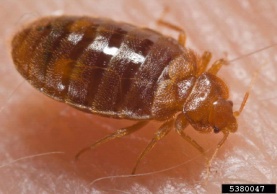Fire ants, as their colonies begin to flood, can join feet or tarsi to form water rafts, and they are more aggressive once in the floating formation, according to Texas A&M AgriLife Extension Service entomologists. But other insect pests can also pose human threats in flood conditions, they said.
Check out this Facebook Post from WFAA Chief Meteorologist Pete Delkus
Dr. Paul Nester, AgriLife Extension entomologist, Houston, and Dr. Mike Merchant, AgriLife Extension urban entomologist, Dallas, encourage those affected by flooding to stay prepared and aware of pests, especially when it comes to mosquitoes, floating fire ant colonies and bedbugs.
After Hurricane Harvey drenched much of southeastern Texas, dropping more than 50 inches of rain in some places and flooding significant portions of metropolitan Houston, everyone needs to be aware of a variety of pests.

Any temporary body of water that is present for more than a week can be a mosquito breeding habitat.
In Texas, the biggest human threat from mosquitoes continues to be West Nile virus from night-flying pests, Merchant said. He pointed out that Zika virus also remains a risk, though a minor one. But nuisance mosquitoes, like the saltmarsh mosquito, not considered especially important for carrying human disease, will be most noticeable in the weeks after water subsides.
“Heavy rains actually reduce some mosquito breeding sites, especially those of the southern house mosquito, which is our primary carrier of West Nile virus,” Merchant said. “But as waters subside and puddles dry up and stagnate, these mosquitoes will return after a few weeks.”
Merchant recommends anyone conducting hurricane cleanup and repairs keep mosquito repellent handy at all times, especially at night.
Meanwhile, Nester said fire ant colonies floating through floodwaters are dangerous, as they are alive and will “explode” upon contact with an object or person, engulfing the subject and stinging it relentlessly in an effort to protect their queen at the center of the formation. He said people should take precautions to avoid run-ins with floating colony “mats” and should remain aware of what objects are floating near and toward them in floodwaters.
“Dress appropriately when working in floodwater,” he said. “Cuffed gloves, rain gear, and rubber boots help prevent the ants from reaching the skin. If they do, they will bite and sting. Remove the ants by rubbing them off.”
Follow this link to see Nester’s short guide on fire ant protection in flood conditions.
While some face challenges from the rising water, Merchant has other advice for displaced Texans living in temporary shelters: be on alert for bedbugs. The pest, while not a major problem in most evacuation centers, has a way of showing up when many people converge in close quarters, Merchant said.
“The most important thing is that shelters are aware of the potential for bedbug problems and have a plan for how to respond,” he said.
He said shelter managers should prepare by knowing what bedbugs look like, inspecting sleeping quarters regularly and employing a reputable pest control company to deal with infestations as necessary.
By: Gabe Saldana
If need you information about mosquitoes check out these links for more information:
Managing Mosquitoes after a Flood
Here is some helpful information about bed bugs
Advice for Staff About Bed Bugs After a Flood
Using Freezing Methods to Treat for bed bugs
For Additional Resources check out Dr. Merchants website Insects in the City



 .
.